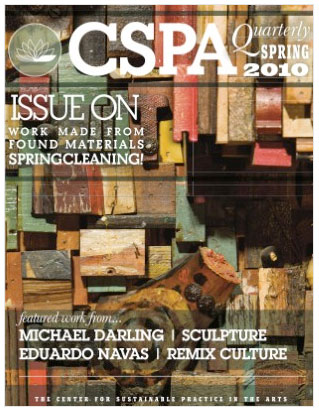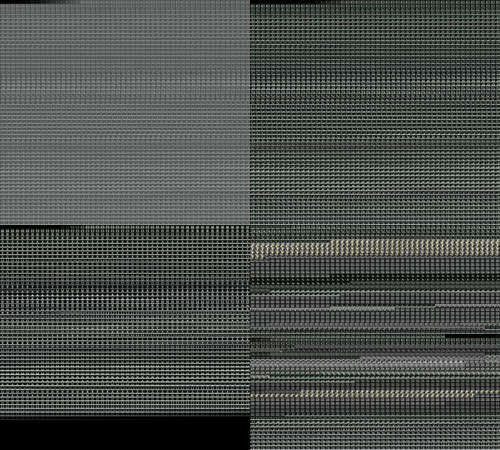Remix: The Ethics of Modular Complexity in Sustainability, By Eduardo Navas

COMPLETE TEXT
“The Ethics of Modular Complexity in Sustainability” was published in the CSPA Quarterly, Spring 2010 Issue. My text is available online according to a Creative Commons License adopted by the CSPA Journal. The content may be copied, distributed, and displayed as long as proper credit is given to the CSPA and the individual author(s), and as long as these contents are used by others for noncommercial purposes only. Any derivative works that result from these contents must also be shared alike.
The journal is the print publication for The Center for Sustainable Practice in the Arts, a non-profit that supports artists and organizations in the process of becoming ecologically and economically sustainable while maintaining artistic excellence.
Editor statement for Spring 2010 issue:
In this issue, we’re working against the stereotypes of the form, and attempting to broaden its term. As always, we’re exploring our chosen theme across disciplines and were delighted to include sculpture, visual art, theater, public art, and media art in the following pages. Instead of asking for work based on waste materials, we asked for work built from objects that already exist.
———-
Abstract: “Remix: The Ethics of Modular Complexity in Sustainability” evaluates sustainability in networked culture. It considers how the flow of information in terms of immaterial production and its relation to knowledge play a role in a fourth economic layer supported by the growing ubiquity of globalization. It revisits and expands, yet again, on my interest in Jacques Attali’s concepts of noise and music to propose a critical position fully embedded in pervasive connectivity.
IMPORTANT NOTE: This text was written as a testing ground for my growing interest in the concepts of volume and module, as explored in vodule.com. Consequently, this text uses the term modular complexity, but does not define it. I consider this text as part of my process to develop a precise definition of modular complexity in social and cultural terms. The interests that inform this text are also relevant to my current research on Remix and Cultural Analytics. Future writings will make clear the interrelation of all these ongoing projects.
This online version contains minor edits made in order to clarify the argument.
———–
At the beginning of the twenty-first century, sustainability can be read with a double meaning: to be self-supportive while socially conscious. This is because specialized fields (and individuals who work in these fields) need to be aware of their interconnectivity if they are to subsist in global culture. Sustainability is relevant in the arts and media according to the interrelation of material and intellectual production, given that such relation supports specialized fields. Sustainability, when linked to social consciousness, modifies how the recycling of material becomes relevant in culture at large. One could promote a philosophy of sustainability, which embodies critical awareness of the politics of intellectual and material property with real consequences in daily life. This is relevant in all areas of culture, even when one may produce strictly in the realm of aesthetics, and other specialized spaces that appear distanced from politics and economy.
The double signification of sustainability also shares principles of recycling with Remix as a form of discourse. This is because Remix expands across culture from music to ecology: from immaterial pleasure to material responsibility. The act of remixing has become common due to the rise of information exchange dependent on cut/copy and paste, which is an act of sampling data in all forms. It enables individuals to apply the attitude of recombining in the realms of aesthetics and material reality, albeit with different results. To be able to critically understand how such attitude functions in the symbolic and the material is the very challenge of sustainability.










